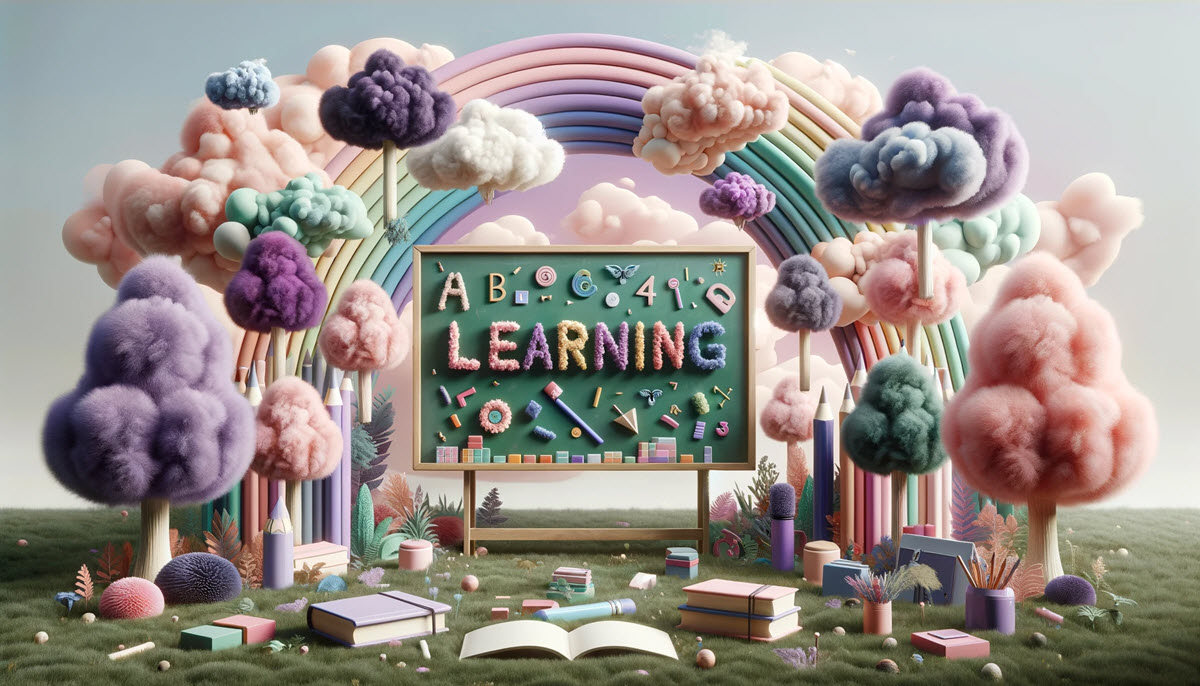Learning the Alphabet and Sounds: A Comprehensive Guide to Early Literacy Skills
Diving into the world of letters and sounds can be an enchanting journey for little ones.
Mastering the alphabet and its myriad of sounds is not just about rote learning; it’s about opening doors to a universe of words, stories, and endless possibilities.
Today, let’s unravel the effective ways we can guide children through the delightful process of learning the alphabet and its sounds.
With a warm cup in hand, imagine us nestled in a sunlit nook, surrounded by books, as we explore the foundational steps that set our children on the path to literacy with joy and ease.

Understanding the Basics: Phonemic vs. Phonological Awareness
Navigating the realm of early literacy, we uncover the pivotal roles of phonemic and phonological awareness.
It’s here, in the delicate dance of sounds and syllables, that the foundation of reading and writing is laid.
Phonological awareness invites children to play with the spoken parts of language—think of it as the rhythm of speech that children tap into as they discern syllables and rhymes.
Phonemic awareness, a subset of this broader skill, hones in on the individual sounds, the phonemes, that are the building blocks of words. These are the sounds that give shape to the alphabet and are crucial for decoding the written word.
It’s about understanding that ‘cat’ isn’t just a three-letter word but a sequence of distinct sounds: /c/, /a/, and /t/.
The mastery of these sounds is a powerful predictor of reading success and is why emphasizing phonemic awareness from the start is so important.
By nurturing these skills, we set children up for a smooth transition into phonics, where they begin to connect sounds with their corresponding letters and words—transforming squiggles on a page into meaningful language.
This foundational knowledge not only empowers children to decode words but also primes them for the complex literacy skills they’ll develop down the road.
It’s a subject so significant that we’ve dedicated a whole piece to it. To understand more about this essential step in every child’s literacy journey, take a moment to read about the importance of learning the alphabet.
In our literacy nook, we champion phonemic and phonological awareness with the same zest we bring to storytime, knowing that these critical skills are the springboard into the vast ocean of language and literacy.
So, let’s dive in and watch as our children embark on this thrilling adventure, armed with the skills they need to navigate the waters with confidence.
The Science of Movement in Learning Alphabet Sounds
Wiggle, jump, and twirl—could these playful actions be the secret ingredients to learning the alphabet and its sounds? Recent educational research enthusiastically nods ‘yes.’
It turns out that inviting young learners to engage in whole-body movements can significantly bolster their ability to recall letter-sound pairings.
For instance, imagine a classroom where children slither like snakes while hissing the /s/ sound or puff up like bears to say /b/. This dynamic approach has been shown to double their recognition of challenging sounds compared to traditional sit-and-repeat methods.
But why does this work so well?
Movement activates multiple areas of the brain simultaneously, fostering stronger neural connections. It’s about encoding the alphabet into muscle memory, making the learning process not just mental but also physical.
When children embody the letter sounds through movement, they’re not just hearing and saying the sounds; they’re living them. And this full-body experience can be particularly impactful for kinesthetic learners, who understand the world through actions and sensations.
So, how can we put this into practice?
Simple classroom activities like forming letters with our arms or marching to the rhythm of a phonetic song can turn a routine lesson into an exhilarating learning experience.
By incorporating these strategies, we’re not just teaching children the alphabet; we’re guiding them through an immersive learning experience that taps into their natural joy of movement.
Remember, each sway and step in this dance of letters is a leap towards literacy. And as educators and parents, our role is to choreograph these early learning experiences with as much creativity and care as we can muster.
So let’s get moving and shake up the way we teach the alphabet and sounds. After all, learning is best done not just with the mind but with the whole body in motion.
Proven Strategies for Phonemic Awareness
Embarking on the phonemic awareness journey, we discover a treasure trove of strategies that have transformed the way children interact with the sounds of language.
Picture this: a room full of eager faces, each child ready to blend, segment, and manipulate sounds into words. It’s not just about teaching; it’s about giving children the tools to unlock the code of reading and writing.
One of the most effective strategies is through blending, where we combine individual sounds to form words. It’s like a game of auditory lego, where each phoneme clicks together to create something new and exciting. We start with simple words, like /c/ /a/ /t/ for ‘cat,’ and as children master these sounds, their confidence soars.
Segmenting is another key strategy, where we encourage children to break down words into their constituent sounds. This practice sharpens their auditory discrimination—a skill that’s as critical as it is empowering. By learning that ‘cat’ can be pulled apart into /c/ /a/ /t/, children gain a deeper understanding of the structure of language.
These strategies are more than just academic exercises; they are the foundational pillars upon which children build their literacy. And the beauty lies in their simplicity—they can be practiced anywhere, from a sunny classroom to a quiet corner at home. It’s about making learning personal, engaging, and, above all, fun.
By weaving these strategies into our daily interactions, we are not just teaching children to read, we are opening up a world of opportunity. And for those curious minds yearning for even more enriching learning experiences, we offer a world of resources tailored to their journey. Dive into one such resource that’s been a beacon for many: reading programs for kids, a guide that’s sure to light the way to literacy excellence.
Building a Strong Foundation for Phonics
Phonics is the next step in the literacy ladder—a step that connects the dots between the spoken sound and its written symbol.
It’s where the abstract becomes concrete, and phonemic awareness is the sturdy groundwork that makes this possible.
Within the cozy corners of our learning spaces, we witness the beauty of this transition. Children begin to match the /s/ sounds with the letter ‘s’ and the /m/ sounds with ‘m’, and before long, they’re not just deciphering words—they’re constructing them.
This phase of learning is like watching a painter bringing a blank canvas to life, one stroke at a time.
To achieve this, we use a blend of visual cues, engaging narratives, and tactile experiences that help children form connections between letters and sounds. It’s a multisensory approach that caters to various learning styles, ensuring that every child finds their pathway to understanding.
Phonics is not just a teaching method; it’s a bridge to literacy that empowers children to explore the world of words with confidence and curiosity. And as we guide them across this bridge, we’re reminded of the transformative power of literacy.
It’s a journey that begins with the simple joy of sound and blossoms into a lifelong love for reading and writing.
Real-world Applications and Success Stories
Stepping out of theory and into the classroom, the impact of phonemic awareness on early literacy development is nothing short of remarkable.
Picture a kindergarten classroom where every letter sound learned is a mini-celebration, a place where phonemic victories pave the way to reading confidence. Teachers, equipped with the right strategies, become conductors of this symphony of sounds, guiding each child through their individual literacy journey.
Success stories abound, with educators witnessing firsthand the transformative effect of phonemic awareness.
Children who once stumbled over simple words begin to read with fluency, their eyes alight with understanding and pride. And as these young learners make leaps in reading, their writing follows suit, with phonetic spelling becoming a stepping stone to more sophisticated writing skills.
But the true testament to the power of phonemic awareness comes not from test scores, but from the children themselves. It’s in their eager hands shooting up to read aloud, in the pages of their journals filled with inventive spelling, and in their growing love for books.
It’s in the way they begin to see themselves as readers and writers, capable and confident.
As we celebrate these successes, let’s remember that they are not just the end goal but the beginning of a lifetime love affair with words and knowledge.
Each story of success is a reminder of why we, as educators and parents, invest our time and hearts into nurturing these foundational skills.
Conclusion
As we wrap up our warm, heart-to-heart talk about the wondrous journey of learning the alphabet and sounds, it’s clear that the path to literacy is as rich and varied as the children embarking upon it.
From the whole-body learning experiences that anchor sounds into memory to the playful blending and segmenting of phonemes, each strategy we’ve discussed opens a new door for discovery and confidence in reading and writing.
Whether it’s through movement, manipulation of sounds, or the methodical matching of phonemes to graphemes in phonics, the goal is always the same: to foster a deep, intuitive understanding and love of language. These early steps in literacy not only pave the way for academic success but also ignite a spark of lifelong learning.
So, as our little ones step boldly into the world of words, let’s continue to guide them with enthusiasm, creativity, and the shared joy of uncovering the magic in every letter and every sound.
Here’s to the adventures that await in the pages of their future favorite stories.

Natalie is a full-time blogger and former elementary school teacher who specializes in helping parents teach their kids to read. With a qualification in Early Childhood Education, over 7 years of experience in education, and a passion for literacy, Natalie provides practical tips, activities, and resources for parents looking to support their child’s learning-to-read journey. She is the proud mom of two young readers and loves sharing her knowledge and experience with other parents. Natalie enjoys spending time with her family, reading, and exploring the great outdoors when she’s not blogging.


